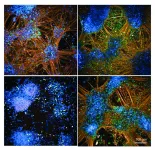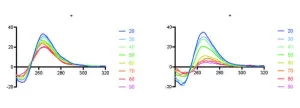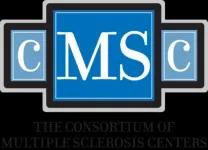(Press-News.org) During the pandemic, University of Rochester Medical Center (URMC) researchers, including those from the Intellectual and Developmental Disabilities Research Center (IDDRC), teamed up with the Mary Cariola Center to study ways to prevent COVID infection among children with intellectual and developmental disabilities (IDD), a particularly vulnerable population. Together, they found that good airflow and filtration in schools may help these children and their teachers avoid COVID infections.
The COVID pandemic was a particularly difficult balancing act for children with IDDs and their families. The Mary Cariola Center, a special education school in Rochester, NY, serves more than 450 students ages 3-21 with severe IDDs and complex medical needs. Many of these children are at heightened risk for infection, but they may also struggle with protective measures, like masking and distancing. Many students rely on the Center for needed services and therapy, so it was imperative to keep these kids in school—and to make sure school was as safe as possible.
With an eye toward expanding the limited COVID prevention toolbox available to these children, URMC researchers and Mary Cariola Center administrators turned their attention toward airflow and filtration in the school.
“COVID, like flu and RSV, is primarily spread through the air,” said Martin Zand, MD, PhD, dean’s professor of Medicine and senior associate dean for Clinical Research at URMC, who co-led the study. “The virus that causes COVID can circulate in the air for up to three hours, so the quicker you filter or circulate out that air, the better.”
Zand, who is also a co-director of the Clinical and Translational Science Institute at URMC, and colleagues from across the Medical Center measured levels of carbon dioxide, a gas we breathe out, in 100 rooms across three buildings on the Mary Cariola Center campus. While not a direct measure, carbon dioxide offers a relatively easy way to estimate ventilation: lower levels of carbon dioxide indicate better ventilation and air quality.
All 100 rooms, which varied in size and purpose—from small classrooms, therapy rooms, and offices to large activity rooms and gyms—stayed well below the Occupational Safety and Health Administration’s carbon dioxide limit. And only three rooms appeared to have lower ventilation (carbon dioxide levels over 2,000 parts per million) for two or more hours during the testing period, which lasted one to three days.
However, many rooms reached moderate carbon dioxide levels (1,001-2,000 parts per million), which are generally safe, but may indicate less-than-optimal airflow. According to the study, the number of COVID cases recorded among people who spent time in a given room was linked to the amount of time that room had moderate carbon dioxide levels (i.e. suboptimal ventilation).
The research team also found a link between COVID cases and air filtration. One building on the Mary Cariola campus has a relatively new ventilation system that can support high efficiency air filters, called MERV-13, that can capture more virus particles. The other two buildings have older systems that aren’t strong enough to move air through the tighter, high-efficiency filters. These systems use more porous MERV-11 filters that may allow more virus particles to circulate through the buildings.
Researchers found classrooms that relied on the more porous air filters had higher numbers of total COVID cases. However, the study was not designed to test if infections were acquired in or outside of school.
Since conducting the study, the Mary Cariola Center has been working on several fronts to improve ventilation in any areas of concern across their campus. They have also pursued state funding and begun conversations with property owners to make overall improvements to the ventilation systems.
While this study, published in PLOS, focused on testing airflow and filtration, it was part of a larger project funded by the National Institutes of Health Rapid Acceleration of Diagnostics-Underserved Populations program. That project, collaboratively led by Zand, John Foxe, PhD, director of the Del Monte Institute for Neuroscience and co-director of the UR-IDDRC, and Stephen Dewhurst, PhD, vice dean for research at the University, brought COVID testing to students and staff in the Mary Cariola Center and helped catch cases early to prevent spreading.
“One thing that COVID taught us is that there isn’t one single magic solution that will prevent all infection from all viruses,” said Zand. “Rather, a combination of approaches is most effective, including masking, vaccination, ventilation, and air filtration.”
During the pandemic, University of Rochester Medical Center (URMC) researchers, including those from the Intellectual and Developmental Disabilities Research Center (IDDRC), teamed up with the Mary Cariola Center to study ways to prevent COVID infection among children with intellectual and developmental disabilities (IDD), a particularly vulnerable population. Together, they found that good airflow and filtration in schools may help these children and their teachers avoid COVID infections.
The COVID pandemic was a particularly difficult balancing act for children with IDDs and their families. The Mary Cariola Center, a special education school in Rochester, NY, serves more than 450 students ages 3-21 with severe IDDs and complex medical needs. Many of these children are at heightened risk for infection, but they may also struggle with protective measures, like masking and distancing. Many students rely on the Center for needed services and therapy, so it was imperative to keep these kids in school—and to make sure school was as safe as possible.
With an eye toward expanding the limited COVID prevention toolbox available to these children, URMC researchers and Mary Cariola Center administrators turned their attention toward airflow and filtration in the school.
“COVID, like flu and RSV, is primarily spread through the air,” said Martin Zand, MD, PhD, dean’s professor of Medicine and senior associate dean for Clinical Research at URMC, who co-led the study. “The virus that causes COVID can circulate in the air for up to three hours, so the quicker you filter or circulate out that air, the better.”
Zand, who is also a co-director of the Clinical and Translational Science Institute at URMC, and colleagues from across the Medical Center measured levels of carbon dioxide, a gas we breathe out, in 100 rooms across three buildings on the Mary Cariola Center campus. While not a direct measure, carbon dioxide offers a relatively easy way to estimate ventilation: lower levels of carbon dioxide indicate better ventilation and air quality.
All 100 rooms, which varied in size and purpose—from small classrooms, therapy rooms, and offices to large activity rooms and gyms—stayed well below the Occupational Safety and Health Administration’s carbon dioxide limit. And only three rooms appeared to have lower ventilation (carbon dioxide levels over 2,000 parts per million) for two or more hours during the testing period, which lasted one to three days.
However, many rooms reached moderate carbon dioxide levels (1,001-2,000 parts per million), which are generally safe, but may indicate less-than-optimal airflow. According to the study, the number of COVID cases recorded among people who spent time in a given room was linked to the amount of time that room had moderate carbon dioxide levels (i.e. suboptimal ventilation).
The research team also found a link between COVID cases and air filtration. One building on the Mary Cariola campus has a relatively new ventilation system that can support high efficiency air filters, called MERV-13, that can capture more virus particles. The other two buildings have older systems that aren’t strong enough to move air through the tighter, high-efficiency filters. These systems use more porous MERV-11 filters that may allow more virus particles to circulate through the buildings.
Researchers found classrooms that relied on the more porous air filters had higher numbers of total COVID cases. However, the study was not designed to test if infections were acquired in or outside of school.
Since conducting the study, the Mary Cariola Center has been working on several fronts to improve ventilation in any areas of concern across their campus. They have also pursued state funding and begun conversations with property owners to make overall improvements to the ventilation systems.
While this study, published in PLOS, focused on testing airflow and filtration, it was part of a larger project funded by the National Institutes of Health Rapid Acceleration of Diagnostics-Underserved Populations program. That project, collaboratively led by Zand, John Foxe, PhD, director of the Del Monte Institute for Neuroscience and co-director of the UR-IDDRC, and Stephen Dewhurst, PhD, vice dean for research at the University, brought COVID testing to students and staff in the Mary Cariola Center and helped catch cases early to prevent spreading.
“One thing that COVID taught us is that there isn’t one single magic solution that will prevent all infection from all viruses,” said Zand. “Rather, a combination of approaches is most effective, including masking, vaccination, ventilation, and air filtration.”
END
Air quality in schools: Shielding kids with intellectual and developmental disabilities from COVID
2024-04-03
ELSE PRESS RELEASES FROM THIS DATE:
JAX researchers make mice a more powerful tool to study a wide range of human diseases
2024-04-03
In humans, the exact same mutation in a specific gene can produce widely different outcomes. It’s a bit like adding the same amount of salt to different recipes—the effect on the finished dish can be quite different, depending on the mix of other ingredients. Now, researchers at The Jackson Laboratory (JAX) have developed a powerful platform to study the reasons behind these varying mutation outcomes. The work, published today in Science Advances, not only provides new opportunities for uncovering targets for therapeutic interventions but also represents a significant step forward in addressing the critical need ...
Immunotherapy for Alzheimer’s disease shows promise in mouse study
2024-04-03
Alzheimer’s disease starts with a sticky protein called amyloid beta that builds up into plaques in the brain, setting off a chain of events that results in brain atrophy and cognitive decline. The new generation of Alzheimer’s drugs — the first proven to change the course of the disease — work by tagging amyloid for clearance by the brain’s immune cells.
Now, researchers at Washington University School of Medicine in St. Louis have found a different and promising way to remove the noxious plaques: by directly mobilizing immune cells to consume ...
Study gives first view of centromere variation and evolution
2024-04-03
A genomic study of human and selected nonhuman primate centromeres has revealed their unimaginable diversity and speed of evolutionary change.
In cell genetics, a centromere is the spot where two sister chromatids attach. A chromatid is one-half of a duplicated chromosome. United pairs of chromosomes have identifiable shapes because centromeres are not in a uniform position. As a cell prepares to divide, the machinery to separate and segregate chromosomes goes into action at each centromere location.
Unless the genetic material ...
New tools reveal how genes work and cells organize
2024-04-03
Proteins binding to RNA are important in many processes in the cell and can mediate a range of biological functions. A specialized structure in both DNA and RNA, the G-quadruplex, are regulatory elements involved in gene expression in both DNA and RNA. In the present work the researchers use theoretical predictions and molecular biology experiments to show that many chromatin-binding proteins bind to RNA G-quadruplexes. With this information they can classify proteins based on their potential to bind RNA G-quadruplexes.
The study uses a combination of experimental identification of RNA G-quadruplex-binding proteins and computational methods to build a prediction tool that identify the probability ...
New study shows LLMs respond differently based on user’s motivation
2024-04-03
A new study recently published in the Journal of the American Medical Informatics Association (JAMIA) reveals how large language models (LLMs) respond to different motivational states. In their evaluation of three LLM-based generative conversational agents (GAs)—ChatGPT, Google Bard, and Llama 2, PhD student Michelle Bak and Assistant Professor Jessie Chin of the School of Information Sciences at the University of Illinois Urbana-Champaign found that while GAs are able to identify users' ...
Top multiple sclerosis neurologists & scientists to headline CMSC Annual Meeting for healthcare professionals
2024-04-03
The leading research and educational conference for multiple sclerosis healthcare professionals in North America, the Consortium of Multiple Sclerosis Centers (CMSC) 38th Annual Meeting, returns to Nashville, Tennessee, May 29-June 1, 2024 at the Music City Center. The conference is renowned for its emphasis on reaching the interprofessional team involved in MS care, with learning opportunities for physicians, advanced practice clinicians, nursing professionals, pharmacists, mental health and rehabilitation specialists, dietitians, researchers, advocates and other members of the healthcare team involved in the management of people with MS.
...
Novel fabrication technique takes transition metal telluride nanosheets from lab to mass production
2024-04-03
Transition metal telluride nanosheets have shown enormous promise for fundamental research and other applications across a rainbow of different fields, but until now, mass fabrication has been impossible, leaving the material as something of a laboratory curiosity rather than an industrial reality. But a team of researchers has recently developed a novel fabrication technique—the use of chemical solutions to peel off thin layers from their parent compounds, creating atomically thin sheets—that looks set to finally deliver on the ultra-thin substance's promise.
The researchers describe their fabrication technique in a study published in Nature on April 3.
In ...
Two Jurassic mammaliaforms from China shed light on mammalian evolution
2024-04-03
Mammaliaforms are extinct and extant organisms that are closely related to mammals. Studying mammaliaforms helps scientists understand the evolutionary processes that led to various mammalian features.
In two consecutive studies in Nature, Dr. MAO Fangyuan and Dr. ZHANG Chi from the Institute of Vertebrate Paleontology and Paleoanthropology (IVPP) of the Chinese Academy of Sciences, together with colleagues from Australia and the United States, recently reported two Jurassic mammaliaforms from China, revealing the earliest dental diversification, mandibular middle ears, and articular-quadrate joint transformation of mammaliaforms.
The ...
Socioecologic factors and racial differences in breast cancer prognostic scores
2024-04-03
About The Study: The findings of this study suggest that the consequences of structural racism extend beyond inequities in health care to drive disparities in breast cancer outcome. Additional research is needed with more comprehensive social and environmental measures to better understand the influence of social determinants on aggressive estrogen receptor-positive tumor biology among racial and ethnic minoritized women from disadvantaged and historically marginalized communities.
Authors: Gregory S. Calip, Pharm.D., M.P.H., Ph.D., of the University of Southern California in Los Angeles, is the corresponding author.
To access the embargoed study: ...
Disparities in mentorship and implications for surgical resident education and wellness
2024-04-03
About The Study: In a survey study of residents of all accredited general surgery programs, one-third of trainees reported lack of meaningful mentorship, particularly non-white or Hispanic trainees. Although education and wellness are multifactorial issues, mentorship was associated with improvement; thus, efforts to facilitate mentorship are needed, especially for minoritized residents.
Authors: Yue-Yung Hu, M.D., M.P.H., of Northwestern University in Chicago, is the corresponding author.
To access the embargoed study: Visit our For The Media website at this link ...




